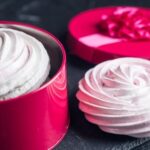Have you ever wanted to learn how to make cake with fondant decorations? Fondant has become a popular choice for cake decorating due to its versatility and design possibilities.
This article will guide you through the process of creating beautifully decorated cakes using fondant, from choosing the right cake base to troubleshooting common issues that may arise. Whether you’re a beginner or an experienced baker, this comprehensive guide will help you take your cake decorating skills to the next level.
Fondant is a smooth, pliable icing that can be rolled out and shaped into various designs, making it perfect for creating intricate decorations for cakes. In this section, we’ll explore what fondant is and why it has gained popularity among bakers and decorators. We’ll also discuss the endless possibilities for design and creativity that fondant offers, from simple patterns to elaborate figurines and flowers.
Before diving into the world of fondant decorations, it’s important to choose the right cake base that works well with fondant. Different types of cakes have varying textures and densities, which can affect how well they hold up under fondant decorations. This section will provide tips for selecting the best cake base for working with fondant, ensuring that your final creation not only looks beautiful but also tastes delicious.
Choosing the Right Cake Base
When it comes to making a cake with fondant decorations, the type of cake base you use is crucial to the success of your creation. Not all cakes are suitable for fondant, so it’s important to choose a cake that can hold up well under the weight and texture of fondant. Here are some tips for selecting the best cake base for fondant:
Exploring Different Types of Cakes
There are certain types of cakes that work best with fondant decorations. Sponge cakes, butter cakes, and mud cakes are popular choices because they have a sturdy texture that can support the weight of fondant without collapsing. These types of cakes also have a fine crumb structure, which provides a smooth surface for applying fondant.
Providing Tips for Selecting the Best Cake Base
When choosing a cake base for fondant decorations, consider the flavor and density of the cake. It’s important to select a cake flavor that complements the taste of the fondant. Additionally, make sure that the cake is level and has been properly layered and filled before covering it with fondant. A level surface will ensure that your fondant decorations look neat and professional on the finished cake.
Whether you’re planning to bake your own cake or purchase one from a bakery, communicate your intention to decorate with fondant so that you can get advice on which type of cake would be best suited for your project. With these tips in mind, you can select the perfect cake base for creating a stunning and delicious cake with fondant decorations.
Preparing the Fondant
When making a cake with fondant decorations, it is essential to have the right type of fondant. While store-bought fondant is readily available, many bakers prefer to make their own homemade fondant for a more personalized touch. Here is a step-by-step guide on how to prepare homemade fondant:
- Start by melting marshmallows in a microwave-safe bowl or over a double boiler.
- Once the marshmallows are melted, add confectioner’s sugar and mix until it forms a dough-like consistency.
- Knead the fondant on a clean surface dusted with confectioner’s sugar until it becomes smooth and pliable.
Coloring and flavoring the fondant can add an extra wow-factor to your cake. When coloring fondant, be sure to use gel food coloring as opposed to liquid food coloring, as it will not alter the texture of the fondant. Additionally, you can add various extracts such as vanilla, almond, or lemon to flavor the fondant and complement the overall taste of the cake.
Incorporating homemade fondant into your cake decorating process allows for greater customization and control over the final product. Whether you choose store-bought or homemade fondant, mastering the art of preparing and working with this versatile decorating medium will elevate your cake creations to new heights.
Rolling Out and Applying Fondant
To roll out fondant, start by dusting your work surface with powdered sugar or cornstarch to prevent sticking. Then, using a rolling pin, roll the fondant into a circle that is slightly larger than the diameter and height of your cake. Carefully lift the rolled-out fondant over the cake and gently drape it over the top.
Use your hands to smooth out any wrinkles and press the fondant against the sides of the cake. Trim off any excess fondant at the base of the cake with a sharp knife.
After applying the fondant, it’s important to smooth and shape it to achieve a flawless finish. A fondant smoother can be used to gently rub over the surface of the cake, removing any air bubbles and ensuring an even layer.
For sharp edges on square or rectangular cakes, use a fondant smoother or ruler to press down firmly on the edges while trimming off excess fondant. With these techniques, you can achieve a professional-looking finish for your fondant-covered cake.
Mastering the art of rolling out and applying fondant may take practice, but with patience and attention to detail, anyone can create stunning cakes adorned with this versatile decorating medium.
Creating Fondant Decorations
Fondant decorations are a fun and creative way to add a personalized touch to your cakes. Whether you’re looking to create elegant floral designs, cute figurines, or intricate patterns, fondant provides endless possibilities for decorating your baked creations.
A Variety of Fondant Decoration Ideas
When it comes to creating fondant decorations, the options are virtually limitless. You can make beautiful sugar flowers using petal cutters and molds, or craft adorable fondant figurines such as animals, characters, or objects.
Additionally, you can experiment with different textures and patterns by using embossing mats or stencils to create unique looks for your cakes. For themed cakes, consider making fondant shapes and designs that match the overall theme – whether it’s for a birthday, wedding, or other special occasions.
Step-by-Step Tutorials for Creating Fondant Decorations
To help you get started with making fondant decorations for your cakes, here are some basic step-by-step tutorials that you can try out:
- How to Make Fondant Flowers: Learn the techniques for shaping petals and assembling them into stunning sugar flowers.
- Crafting Fondant Figurines: Follow a simple guide on how to sculpt fondant into adorable figurines for cake toppers.
- Creating Patterned Fondant: Experiment with different tools and techniques to add elegant patterns and textures to your fondant decorations.
Tips for Perfecting Fondant Decorations
Working with fondant can be both exciting and challenging. To ensure that your fondant decorations turn out beautifully, it’s important to pay attention to details such as consistency, handling, and storage. Keep in mind that practice makes perfect – don’t be discouraged if your first attempts at fondant decorations don’t turn out exactly as planned. With some patience and creativity, you’ll soon become skilled at creating stunning fondant designs for your cakes.
Decorating Techniques With Fondant
Fondant is a versatile medium that offers endless possibilities for decorating cakes. One popular technique for using fondant to decorate cakes is to create a smooth, flawless finish on the exterior of the cake. This can be achieved by rolling out the fondant into a thin, even layer and carefully covering the entire cake with it. The smooth surface of the fondant provides an ideal canvas for adding additional design elements such as patterns or figurines.
Another decorative technique with fondant involves creating three-dimensional designs and figurines. A skilled cake decorator can use fondant to sculpt lifelike flowers, animals, or other objects to adorn the cake. These figurines can add a touch of whimsy and personality to any cake and are sure to impress guests at any special occasion.
In addition to these techniques, fondant can also be used to create intricate patterns and designs on the surface of the cake. By using cutters, molds, and sculpting tools, decorators can achieve visually stunning effects with fondant. Whether it’s a simple polka dot pattern or an elaborate lace design, the possibilities for creativity are truly endless when working with fondant.
| Decorative Technique | Description |
|---|---|
| Smooth Finish | Create a flawless exterior by covering the cake with rolled-out fondant |
| Three-dimensional Designs | Sculpt lifelike flowers, animals, or other objects as decorative elements |
| Intricate Patterns and Designs | Use cutters, molds, and sculpting tools to create visually stunning effects |
Troubleshooting Common Fondant Issues
When working with fondant, it’s common to encounter some hiccups along the way. Here are some common issues that may arise when working with fondant and how to troubleshoot them:
1. Cracking or Tearing: If you find that your fondant is cracking or tearing while rolling it out or applying it to the cake, try kneading it with a little bit of shortening to soften it up. You can also try rolling it out on a surface dusted with powdered sugar to prevent sticking.
2. Elephant Skin Texture: Sometimes, fondant can develop a rough, elephant skin-like texture when applied to the cake. To fix this issue, gently smooth the fondant with your hands and use a fondant smoother tool to even out the surface.
3. Air Bubbles: Air bubbles can form underneath the fondant while covering the cake, creating an uneven appearance. To get rid of air bubbles, simply use a small pin to carefully puncture the bubble and then smooth out the area with your fingers.
4. Fondant Too Soft or Too Hard: Getting the right consistency for your fondant can be tricky. If your fondant is too soft and sticky, try adding more powdered sugar while kneading. If it’s too hard and dry, add a small amount of vegetable shortening to soften it up.
By being aware of these common issues and knowing how to troubleshoot them, you’ll be better prepared to tackle any challenges that come your way when working with fondant decorations for your cake.
Final Touches and Presentation
Once the fondant decorations have been applied to the cake, it’s time to add the final touches and present your masterpiece. After all the hard work put into creating and decorating the cake, it’s important to pay attention to the finer details that will enhance its overall appearance.
One way to add a finishing touch is by using edible glitter or shimmer dust to give the cake a subtle sparkle. This can be applied sparingly over certain areas of the fondant decorations or brushed on for an all-over glimmer. Edible pearls, sprinkles, or dragees can also be strategically placed to add a touch of elegance and texture to the cake.
For a more personalized touch, consider adding a message or name plaque made from fondant. Using letter cutters or molds, you can create a message that suits the occasion, whether it’s a birthday, wedding, or special celebration. This adds a thoughtful and customized element to the cake that will be appreciated by the recipient.
When it comes to presentation, choosing the right cake stand or platter is crucial in showcasing your fondant-decorated creation. A simple yet elegant presentation can elevate the overall look of the cake. Additionally, incorporating complementary elements such as fresh flowers, ribbons, or themed decorations around the base of the cake can further enhance its visual appeal. Remember that presentation plays a significant role in making your fondant-decorated cake truly stand out and impress guests.
Conclusion
In conclusion, making a cake with fondant decorations can be a fun and rewarding experience for any baker, regardless of their skill level. The versatility and design possibilities of fondant allow for endless creativity, making it a popular choice for cake decorating. From preparing the homemade fondant to creating beautiful decorations and troubleshooting common issues, this article has provided a comprehensive guide to using fondant to elevate your cakes.
Ultimately, the key to successful fondant decorating lies in patience, practice, and creativity. Whether you’re looking to create simple yet elegant designs or intricate and elaborate decorations, the step-by-step tutorials and tips outlined in this article can help you achieve stunning results. Remember that working with fondant may come with its own set of challenges, but don’t let that discourage you from experimenting and honing your skills.
So go ahead and unleash your creativity by trying out different techniques for using fondant to decorate cakes. With some dedication and a willingness to learn from any mishaps along the way, you’ll soon be able to produce beautifully adorned cakes that are sure to impress both friends and family. Happy decorating.
Frequently Asked Questions
How Do You Put Fondant Decorations on a Cake?
Putting fondant decorations on a cake requires a few steps. First, you’ll want to prepare your fondant by rolling it out to the desired thickness and cutting out the shapes you need.
To adhere the decorations to the cake, brush a thin layer of water or edible glue onto the back of each piece before gently pressing it onto the cake’s surface. Take care to smooth out any air bubbles and ensure that the decoration is securely in place.
Can You Put Fondant Decorations on a Cold Cake?
It is possible to put fondant decorations on a cold cake, but it may not be ideal. If your cake has just been taken out of the refrigerator, condensation can form on its surface when it returns to room temperature, which could cause the fondant to become sticky.
To avoid this, allow your chilled cake to reach room temperature before applying fondant decorations.
What Do You Put on a Cake Before Fondant?
Before applying fondant to a cake, it’s important to first cover the cake with a thin layer of buttercream or ganache. This creates a smooth surface for the fondant to adhere to and helps seal in moisture, ensuring that the fondant stays fresh and doesn’t dry out.
Once the base layer is in place, you can then carefully drape your rolled-out fondant over the top of the cake and smooth it into place using a smoother or your hands.

Welcome to my blog about home and family. This blog is a place where I will share my thoughts, ideas, and experiences related to these important topics. I am a stay-at-home mom with two young children. I hope you enjoy reading it! and may find some helpful tips and ideas that will make your home and family life even better!





